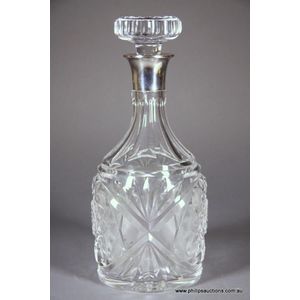Mappin & Webb is a British company that was established in 1889, but its origins go back to 1775 when Jonathan Mappin opened a silver smithing workshop in Sheffield. The business passed down through generations until it was incorporated as Mappin Brothers Ltd by Jonathan's four great-grandsons. In 1859, William, the eldest brother, left the business and the youngest, John, started his own firm called Mappin & Company. In 1864, John's brother-in-law George Webb joined the business, and they renamed it Mappin, Webb & Co. and then Mappin & Webb Ltd in 1889.
Mappin Brothers
more...
Ltd remained with the middle two brothers who expanded the business, and it was eventually sold to John Mappin, who incorporated it into Mappin & Webb Ltd. In 1897, Mappin & Webb received their first Royal Warrant from Queen Victoria, and they launched their acclaimed Campaign watch the following year. The company expanded rapidly, with stores in twelve locations by 1910, including Johannesburg, Biarritz, Rome, Buenos Aires, and Cairo.
The company's silverware was purchased by royalty from Europe and beyond, and Mappin & Webb created commemorative pieces for royal occasions and important events. They also made fine jewellery and opened an in-store branch in Selfridges in 1977. Mappin & Webb's master craftsman was appointed the Crown Jeweller by Queen Elizabeth II in 2012. The company currently holds warrants from both the Queen and the Prince of Wales. After being owned by the Asprey Garrard Group, the company is now owned by the retail group Arum Holdings Ltd.
less...
The earliest decanters date from the late seventeenth century and were made from blown moulded glass.
They were used to serve wine at a time when there was a move towards less formal dining procedures and the reduced reliance on servants and waiters.
The 1745 Excise Tax caused manufacturers to make decanters lighter in weight. The tax benefited the industry in Ireland where it did not apply. When the tax was repealed in 1845, a heavier gauge was reverted to.
In the second half of the eighteenth century blue, green and amethyst coloured decanters were made.
Decanters often sat on
more...
silver bottle coasters with baize bases (some even on castors) and could be 'pushed' around the dining table without making scratches or requiring serving staff.
less...


 Loading more...
Loading more...